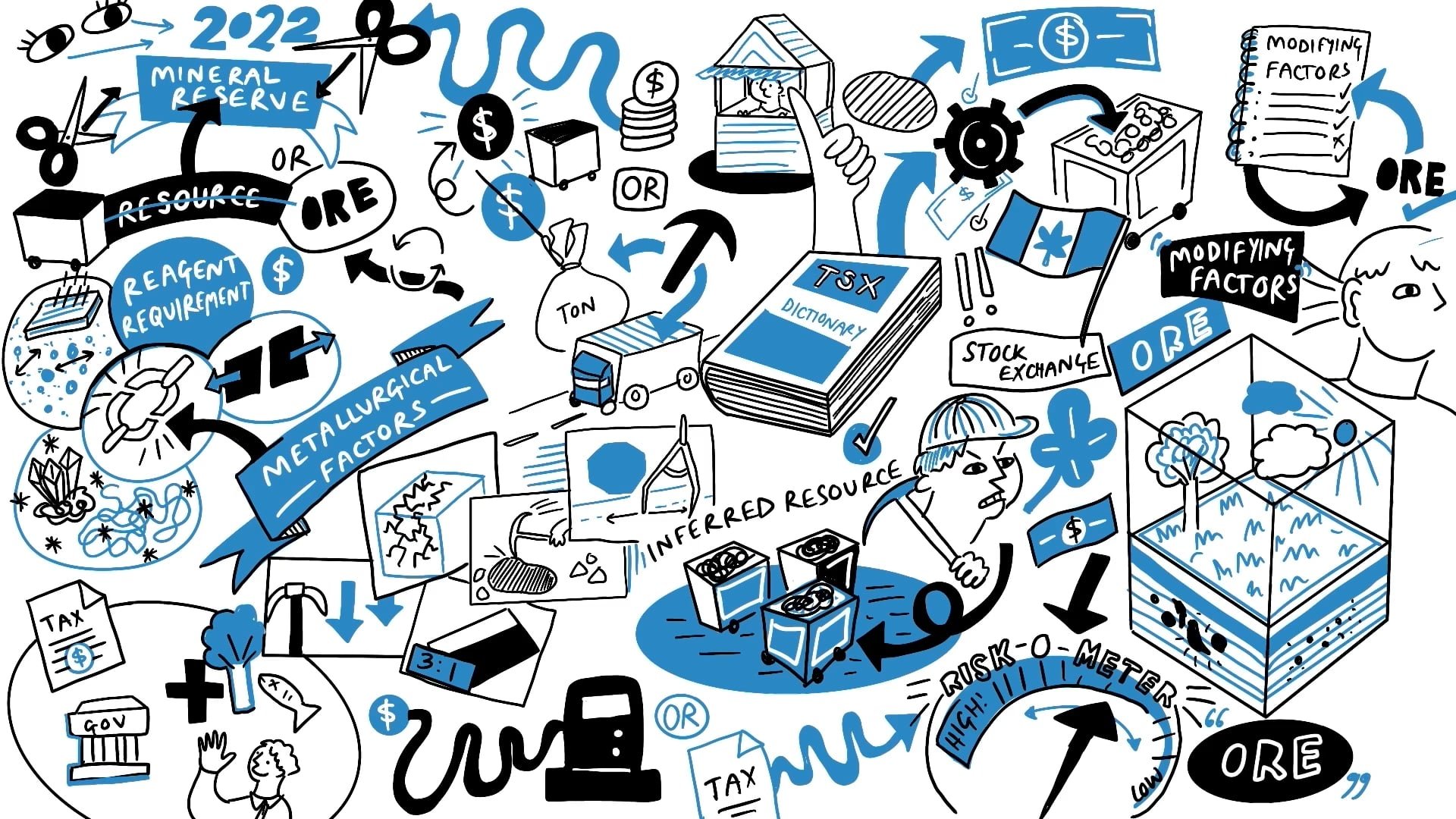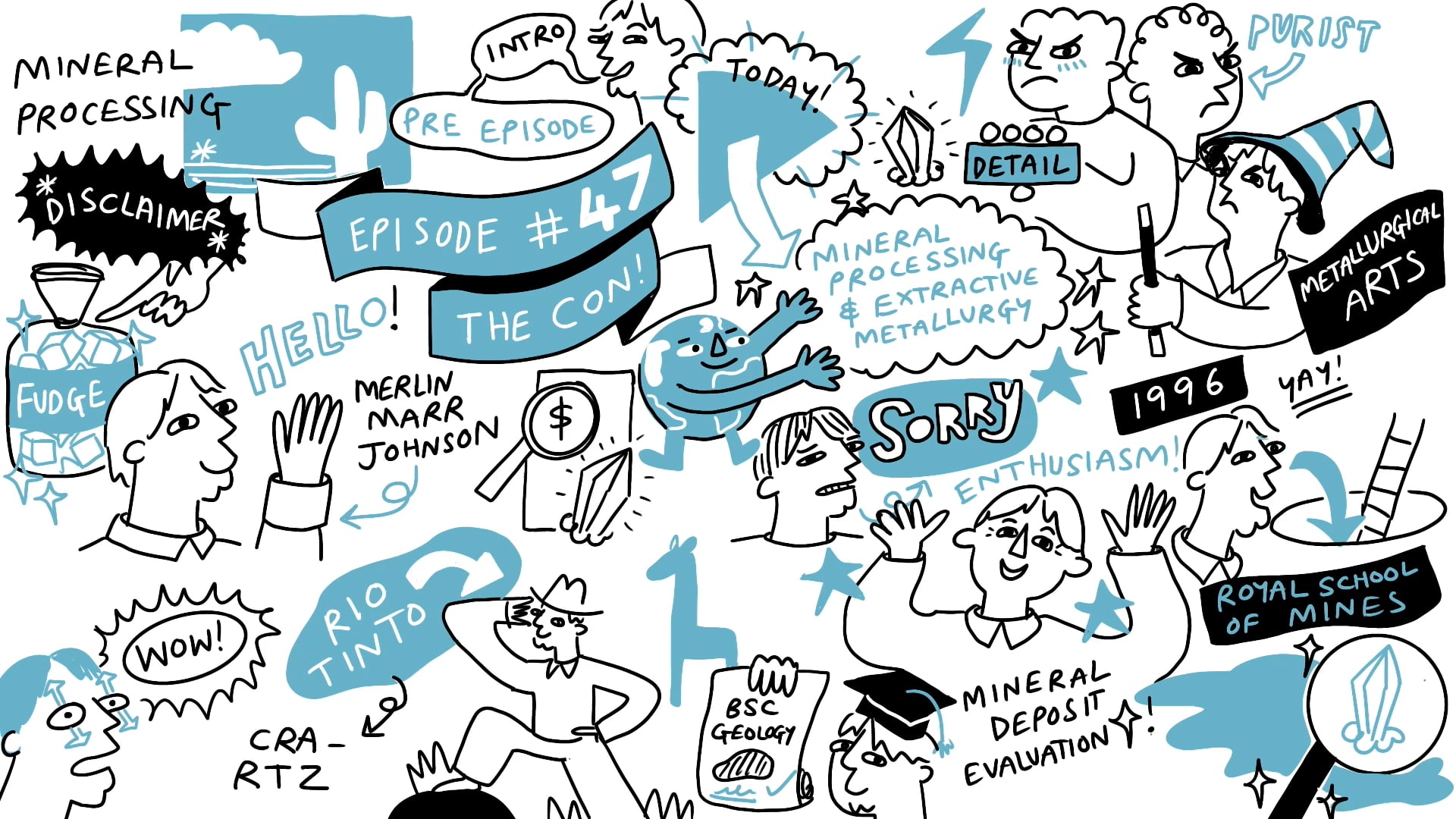Technical Studies: DFS & the CEO paradox

More episodes
Transcript
Feasibility Study or Definitive Feasibility Study (DFS)
Once you’ve established what is going to be the best method for your deposit, what’s going to create the best NPV, then what you really want to know is how is this going to work and what are the actual costs going to be? At that point, you’re going to want to go to a Feasibility Study. A Feasibility Study is a comprehensive technical and economic study of the selected development option for a mineral project with all the modifying factors. The key point about a Feasibility Study is that the results of the study are robust enough to serve as the basis for a final decision. When people say they’re going to do a Feasibility Study and then they’re going to move into Bankable, or they’re going to do a Feasibility Study and then move into a Definitive Feasibility Study, what they mean is that they’re not doing a Feasibility Study. It’s some kind of pre-work because if you do a Feasibility Study properly, it is enough to make that final decision. Of course, it’s a high level of confidence in the Pre-Feasibility Study and it’s completed with ‘Sufficient rigour to serve as the basis for an investment decision, or to support project finance.’ That’s in the code.
There you have it. I hope that was helpful. Just as a recap, when you look at a PEA or a Scoping Study, the concept is what could it be? You’ve got some geological data; you should have a resource. You might still be drilling at one side. It’s just trying to work out what we’re dealing with here. Is this something that’s going to sustain 70,000oz of Gold production a year, or 200,000oz of Gold production a year. Is it going to be 10,000t of Copper per year, or 50,000t of Copper per year? Is it open-pit, underground? What processing will there be? All of these things get put into a PEA Scoping Study and quite often, it’s at an early stage of understanding the deposit, it comes out with a number which is hopefully positive, you go on and study it and then at a later stage - oh, the mining method changes, or actually this best done not as a big project, but actually reduce the Capex and take a high-margin approach on this for 15-years rather than trying to blow our brains out and get our recoveries back in 7-years.
The objective is to get an early-stage conceptual assessment of the potential economic viability of a mineral resource. Typically, these things are +/-50% accurate. You use estimates, consultants, factors; so you say, ‘Oh, this plant over here cost $70M and we’re looking at an output rate that’s going to be half of that,’ and so you factor down the Capex and arrive at a cost which is halfway between a guess and a worked example. It’s an educated guess. The consultants are experts at working out what these factors are. Of course, you use benchmarks, you know that a similar deposit costs $XM to build, and therefore it’s likely that yours is going to be $XM to build as well.
The input in terms of resources is your inferred resource. You go on this when you’re more advanced than an exploration target, but you haven’t gone to measured and indicated resources yet. You’re very much in the inferred space. What it does tell you at the end is the reserve. It doesn’t give you this is absolutely what can come out at the end of your project. It does give you a mineable tonnage which is an internally reportable figure. You can say you’ve got 50Mt of resource, when we wrap around the economics, 30Mt of this falls into the open-pit, for example. But that’s not a reserve. Pre-Feasibility Study, a PFS, the concept is really what it should be. What’s the best method to extract this resource? The objective is to have a realistic analysis. You’re looking at realistic economic and engineering studies, sufficient to demonstrate economic viability and to establish mineral reserves. What you’re trying to do here is say, ‘This is the value case of this project, it costs this much to build, this is the process that you should follow, your cost accuracy is around 25%,’ so between 20% and 30%.
Your input data should include some quotes from, for example, the mining or the pre-stripping or whatever it is. You might get an EPCM quote from the deliverer of the plant. It’ll have some factors, so the team doing the Feasibility Study for you might say, ‘We’ve just built one of these, yours is 4/5 of the size, we can factor down costs by X amount and this is an accurate figure for something that we’ve just built.’ Of course, you should really rely on benchmarks. You cannot use inferred resources in the calculation of what’s going to be mined for a PFS. I that to be measured and indicated resources and once you’ve applied the modifying factors, it will spit out a reserve figure. You’re getting close to now to a final answer of how much material at what grade, and at what tonnes, can be spat out of the back end of your plant.
PEA was what it could be, PFS what it should be, and the Feasibility Study is what it will be. The objective is a detailed study of how the mine will be built. You want to use it as a basis for production decisions, for now. Sometimes these things don’t actually pan out the way you want to. The cost accuracy in Feasibility Studies is typically 15%, 10% to 20%. Some will try to get closer than that. You’re using detailed quotes and a lot of rigorous benchmark checks. Your input again is measured and indicated resources and your output is an understanding of your proven and your probable reserves.
Just a quick note on benchmarks, this is so important because CEOs of companies and management teams will always say, ‘Oh, we can build this cheaper. Forget those guys, they spent far too much money on that whatever it was. They completely over-engineered it.’ They will put pressure on to try and put the Capex down. They say, ‘We know, we’ve done this before, we know that this is only going to cost that, and we know that we can get the operating costs down to this.’ A benchmark study will stop any mucking around with the numbers. It’ll just say, ‘Hang on, we’ve got 100 operations, they’ve all costs between this and this to do that job, it’s impossible that you as a management team are going to be able to do this at a fraction of the costs.’ Well, it’s not impossible, but it’s highly unlikely and if you succeed, hats off to you but let’s just put the average number that the industry knows in for this cost. It’s incredibly frustrating for management teams who feel that they’ve got a unique approach and they really can do it at a lower cost but time and time again, exploration development companies do end up going over budget and/or finding out that actually, this is a real cost. Again, I would say that if you as a management team can deliver something well below the average cost, brilliant, but let’s work on the basis that it’s going to cost the same as everybody else in the industry.
The CEO’s paradox
Imagine this: you’re Company A, and what you really want to do is grow value for shareholders. It’s a noble ambition. Company B however, wants to make sure that it makes good money on any mine that it develops. Also, a valid mission but the 2 may have different outcomes and different methods because making sure that you develop a sensible mine isn’t the same as necessarily getting the share price up in the short to medium-term because the mining sector is full of dreams and hope. In particular, if you look at the Lassonde curve of where value is created in the mining space over time, you go from exploration, blue sky, smooth pasture, you find something and the value goes up and then you go through the technical studies, the boring but important bit where you’re putting money into defining resources and grade and tonnes on your resource, and then you go through the construction phase.
We’ve also mentioned that there are different management teams. You can actually have a team that’s expert at finding stuff and then they sell it onto a different team that does the study, or that does the construction, and probably a different team that does the operating of the mine. By breaking up the ownership of this, you don’t have the same endpoint. An explorer company isn’t necessarily thinking about the mine at the end, or all the details of what’s going to make a commercial mine. They’re thinking about how we get this resource up so that we can sell it for our shareholders at the best point.
What this means is that for a CEO who is an explorer and developer, the technical studies aren’t so much about the final carrying this through to developing the mine, yes that’s important and yes, it’s in the code, but remember that these are more valuation milestones. They’re more enabling factors. The tech studies are more enabling milestones for the junior company to raise money. You’ve also got to remember that because a junior company typically doesn’t have income, it’s got time constraints, the funding model is that these things have no income, so they’ve got to pay for the G&A, they’ve got to pay for the drilling, and not only that but it’s really hard to find deposits. Once a team gets something that looks like a deposit, it’s really hard to find another one. It’s really expensive to buy another project and it’s really hard to find your own.
Teams often get stuck with their discoveries and what they’re trying to do is make it work. They’re trying to put it in its best light, show that it works, and then of course it’s harder if it’s marginal. What that means is that when it comes to technical studies, a CEO of an explorer developer has got a slightly different mentality from a producer. A producer when doing a Feasibility Study is just going through de-risking milestones. They’re not looking for extra funding on the back of a Feasibility Study. They’re not time-constrained by the money coming out of the till and the G&A. Yes, they might get a bit of pressure from their shareholders but effectively, what they’re really trying to do is de-risk it as a gating process. Often, they have the same technical teams reviewing many projects. You’ve got a really experienced in-house team who can say, ‘This isn’t going to work, this might work.’ They can afford to take the best and they can also afford to buy someone else’s best or discover their own, and therefore it becomes easier to reject.
Just going to flag that up. For investors, this means that you can trust it more when it’s real. You do need to understand that to some degree, these resource studies are capital markets gain, and that’s okay but it is cycle dependant, so the valuation is going to vary depending on where the cycle is going. You’ve also got to understand the background of the team. Is this the team that’s actually going to build it or is this the team that’s got a history of selling their asset at a point along the curve? That’s completely fine but you might not always have the same trust in the NPV figures or the Feasibility Studies as you would in a team that’s done it before. The really dangerous one is when you’ve got a team that hasn’t built things before but is going through to build it again. You’ve got to make sure that this is vigorous. Finally, when it is vigorous, then you can absolutely trust the NPV because these are good studies.









































.jpg)
.jpg)
.jpg)
.jpg)















